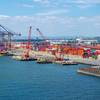While the theoretical jury deciding which direction the offshore drilling market will take is still out, recent data suggests that the level of spending internationally will disappoint. Calling a 10.2% gain in spending a disappointment may seem a bit harsh, particularly given the depths to which the market has fallen in the previous two years. But considering the price per barrel has catapulted from the $10 level early in 1999 to the mid-20's by the beginning of 2000, it is fair to say expectations were set a bit higher.
According to a recent Lehman Brothers survey, the following are the spending plans - by world region - for more than 320 oil companies.
Summary of Oil & Gas Exploration & Production Expenditures ($ Millions)
2000E 1999E Year % Chg. # Co.
U.S. Spending by Non-Majors $13,402 $10,907 +22.9% 215
U.S. Spending by Majors 10,959 10,113 +8.4% 15
Total U.S. Spending 24,361 21,020 +15.9% 230
Canadian Spending 8,030 6,272 +28% 78
International Spending 54,078 51,160 +5.7% 97
TOTAL $86,469 $78,452 +10.2% 320
The silver lining to the above numbers is the level of increase expected in North America. Canadian spending is estimated to rise by a strong 28 percent. Increased optimism about natural gas is the leading cause for the investments.
The gains in the U.S. are also significant, with 215 independents budgeting an impressive 22.9 percent increase.
Among larger independents, Noble Affiliates (Samedan) is forecast to more than double spending to $254 million. Forcenergy is estimated to more than double expenditures to $164 million. And Apache Corp. is budging a more than 50 percent increase to $325 million.
Union Pacific Resources is forecast to have a 31 percent increase in spending to nearly $1.1 billion; Unocal an 18 percent gain to $650 million; Vastar Resources a 20 percent rise to $750 million; Kerr McGee will increase 38 percent to $407 million; CNG Producing will budget a 54 percent jump to $439 million; and Ocean Energy is earmarking a 38 percent advance to $365 million.
However, the 15 majors are only planning for an 8.4 percent increase. While certain majors planning significant gains overseas are also planning healthy gains domestically (Conoco, Phillips Petroleum, USX-Marathon) and while BP Amoco is earmarking a greater share of its budget to the U.S., several sizable majors are planning flattish expenditures.
Oil and gas companies are basing their budgets on an average oil price of $19.25 per barrel (West Texas Intermediate) and an average U.S. natural gas price of $2.38 per mcf (Henry Hub). Lehman Brothers' forecast is for an average oil and natural gas price of $19.50 and $2.55, respectively.
But despite these advances, there are still a noticeable reservations regarding activity levels. First, the energy markets have been through - and continue to embark on - a trail toward historic levels of consolidation. It is still undefined as to how fewer, larger companies will deploy their E&P dollars. In fact, mergers and the impact on spending plans may be one of the primary reasons for the conservative estimates by the majors.
Second, the actions of the member of OPEC are still in question. Oil pricing gains are largely the result of output cutbacks. While the organization appears more committed than ever to maintaining a profitable supply and demand balance, there are no guarantees the market won't be flooded with new reserves at any given moment.
For example, countries with poorly performing economies or who weather severe natural disasters may be enticed to increase output to fill budget gaps.
Of the companies responding, 68 percent said E&P spending was determined by cash flow, and 67 percent listed natural gas prices as a key factor. The companies also named oil prices (59 percent), capital availability (52 percent), prospect availability (45 percent), drilling success (41 percent) and drilling costs (31 percent) as decision-makers.
Fully 77 percent of the respondents said they expected drilling costs to increase in 2000, yet only 35 percent said a higher oil price would impact the company's E&P spending. Majors overwhelmingly would not make any adjustments to E&P budgets, while independents more narrowly would not.
While offshore players seemingly expected the bounce back to be delayed until mid-year, following naturally industry tendencies, it is fair to say offshore rig and service providers and their investors are itching to start locking up contracts again.
Survey of Major Oil and Gas Company E&P Expenditures in the U.S. (1999E-2000E) ($Millions)
Company 2000E 1999E
Amerada Hess $210 $185
Atlantic Richfield 1,200 1,300
BP Amoco 1,900 1,500
Chevron Corp. 1,150 900
Conoco 450 420
Eni SpA 150 250
Exxon Mobil 1,700 1,600
Murphy Oil Co. 135 90
Occidental Petroleum 212 164
Philips Petroleum 332 239
Royal Dutch Shell 1,300 1,250
Statoil 120 115
Texaco 1,000 1,000
TotalFina Elf 500 600
USX-Marathon Group 600 500
Total 10,959 10,113
+8.4%
Subscribe for
Maritime Reporter E-News
Maritime Reporter E-News is the maritime industry's largest circulation and most authoritative ENews Service, delivered to your Email five times per week









